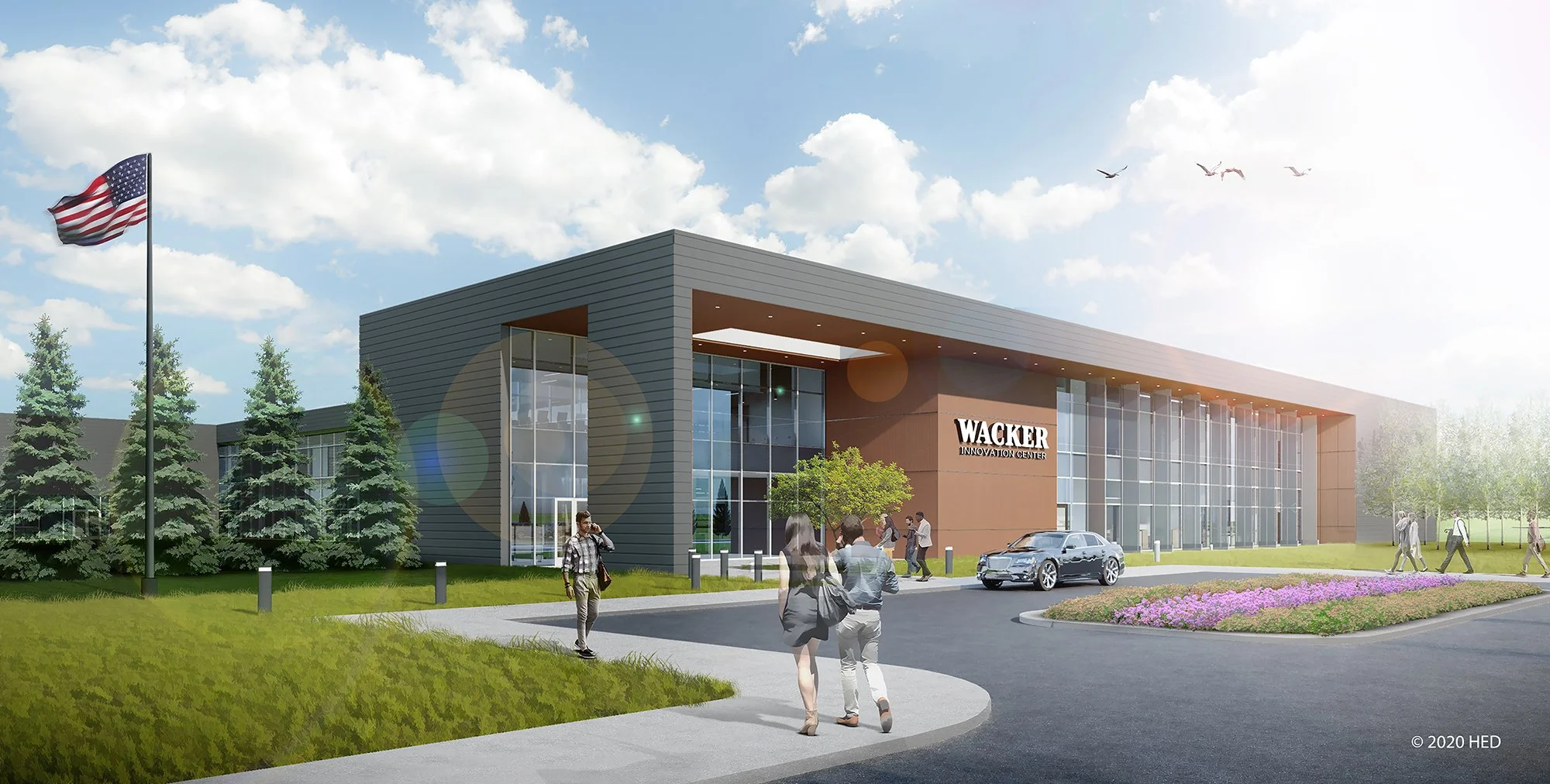Project Profile: Wacker Chemical North American Innovation Center & Regional Headquarters
Moving to become one of the premier corporate brands in Ann Arbor, Wacker is doubling their current R&D square-footage and upscaling it into a modern, desirable workplace whose beauty and convenience will retain senior employees while attracting young talent. HED’s design strategy for this reimagining of Wacker’s built environment focused on providing the features most important to the company’s employees; flexibility, ergonomic workstations, and plentiful daylighting.
HED
Facility name: Wacker Chemical North American Innovation Center & Regional Headquarters, Ann Arbor, MI
Size: 140,000 sq. ft.
Cost: $52 million
Project team: HED (architect, MEP engineer, structural engineer), Kirco Manix (contractor), PEA Group (civil engineer)
Completion date: March 2022
The new office and research building for global specialty chemical maker Wacker Chemical has been developed by Kirco and designed by national architecture and engineering firm HED. The project broke ground in late 2020 in Pittsfield Charter Township, just south of Ann Arbor. The building has been designed to enhance employee collaboration and create state-of-the-art R&D laboratory space focused on innovation for the global company. With a capacity for more than 300 employees, the new North American site for the German company will include those who will relocate from Wacker’s current regional headquarters in the city of Adrian, MI, as well as up to 70 new employees to be added in the next five years.
The lab spaces are connected by a service corridor that allow for the flow of materials safely to all research spaces within the building. In addition, this provides a point of interaction for team members. To the far left are windows visually linking the labs to the technical workspaces inside the building as well, helping keep visual access amongst collaborators within the team.
HED
The building’s “extroverted design” will help engage employees and visitors with the surrounding landscape and community context, creating a highly experiential and interactive environment that inspires and activates its occupants. Large, contiguous floor plates, for both open office and lab space environments, provide a high degree of flexibility and opportunity for interaction and collaboration.
In the context of uniting a “divergent lab” with a “new technical workplace,” HED has recently developed its New Scientific Workplace model. Developed as a framework for designing and visualizing trends and new methods of work and research, the New Scientific Workplace establishes a platform for these spaces aimed at creating adaptable spaces that flex with the changing nature of research and work. At Wacker, the open work zones offer opportunities for staff to work at assigned workstations or to work in environments designed for a collaborative or “heads down” work. Under this model, this new workspace truly encompasses the entire building.
The laboratory spaces are open and adaptable, creating a dynamic platform that can be updated and reconfigured as research needs change. The Wacker team expressed the strong desire for the research labs built to be flexible, allowing both the staffing and equipment to be easily updated and changed out over time. Services travel via an integrated service carrier, which can be prefabricated and lifted into position, the open nature of the carrier allows for easy access and changeout of connections.
Environmental sustainability was also a priority for Wacker and the design team as the building developed. The hybrid HVAC solution designed provides single pass air to the lab spaces while driving overall system costs down. The fume hoods are high performance hoods, with automatic sash closers to maximize potential energy savings. Employee wellness and views to daylight and nature were also considered a priority in connecting staff to the outdoors, creating a visual stress relief for the highly focused team. As such, all labs have a view to the exterior, and workstations for technical staff have a view into the lab through to the outside.


